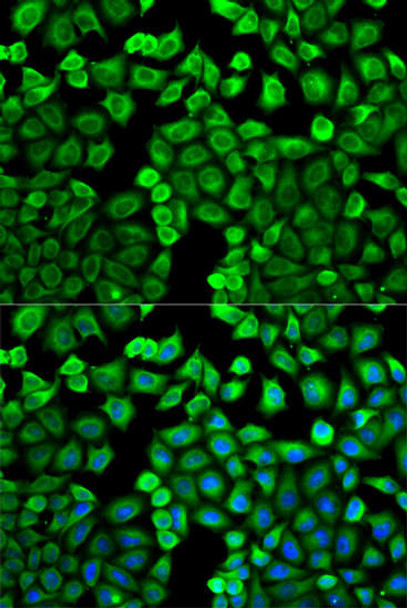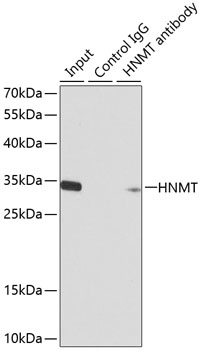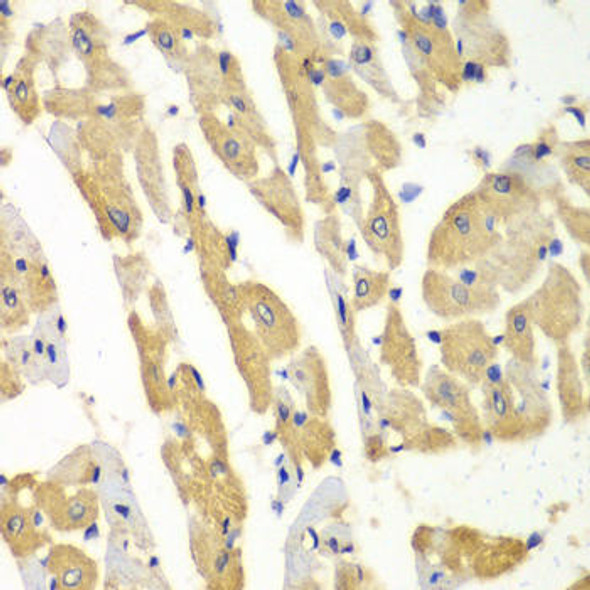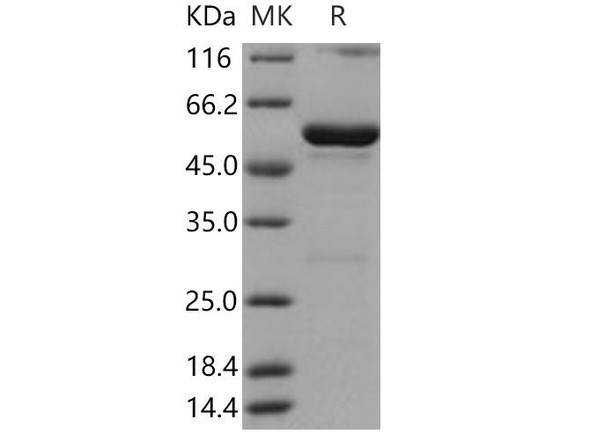Description
Anti-HNMT Antibody (CAB2520)
The HNMT Polyclonal Antibody (CAB2520) is a valuable tool for researchers studying the histamine N-methyltransferase (HNMT) enzyme, which is involved in the inactivation of histamine in the body. The antibody, produced in rabbits, exhibits high reactivity with human samples and has been validated for use in Western blot and immunofluorescence applications.HNMT plays a crucial role in histamine metabolism, which is important for regulating various physiological processes, including inflammation, gastric acid secretion, and allergic reactions.
Dysregulation of histamine levels due to HNMT dysfunction has been implicated in various diseases, such as asthma, allergy, and autoimmune disorders.By targeting the HNMT protein, researchers can gain insights into the mechanisms underlying histamine regulation and its implications for health and disease. The HNMT Polyclonal Antibody offers a reliable tool for detecting and analyzing HNMT expression in different cell types, making it a valuable asset for studies in immunology, allergy, and inflammation research.
| Antibody Name: | Anti-HNMT Antibody |
| Antibody SKU: | CAB2520 |
| Antibody Size: | 20uL, 50uL, 100uL |
| Application: | WB IF IP |
| Reactivity: | Human, Mouse |
| Host Species: | Rabbit |
| Immunogen: | Recombinant fusion protein containing a sequence corresponding to amino acids 1-292 of human HNMT (NP_008826.1). |
| Application: | WB IF IP |
| Recommended Dilution: | WB 1:500 - 1:2000 IF 1:50 - 1:100 IP 1:50 - 1:200 |
| Reactivity: | Human, Mouse |
| Positive Samples: | 22RV1, NCI-H460, HT-29, HepG2, HeLa, Mouse liver, Mouse brain |
| Immunogen: | Recombinant fusion protein containing a sequence corresponding to amino acids 1-292 of human HNMT (NP_008826.1). |
| Purification Method: | Affinity purification |
| Storage Buffer: | Store at -20'C. Avoid freeze / thaw cycles. Buffer: PBS with 0.02% sodium azide, 50% glycerol, pH7.3. |
| Isotype: | IgG |
| Sequence: | MASS MRSL FSDH GKYV ESFR RFLN HSTE HQCM QEFM DKKL PGII GRIG DTKS EIKI LSIG GGAG EIDL QILS KVQA QYPG VCIN NEVV EPSA EQIA KYKE LVAK TSNL ENVK FAWH KETS SEYQ SRML EKKE LQKW DFIH MIQM LYYV KDIP ATLK FFHS LLGT NAKM LIIV VSGS SGWD KLWK KYGS RFPQ DDLC QYIT SDDL TQML DNLG LKYE CYDL LSTM DISD CFID GNEN GDLL WDFL TETC NFNA TAPP DLRA ELGK DLQE PEFS AKKE GKVL FNNT LSFI VIEA |
| Gene ID: | 3176 |
| Uniprot: | P50135 |
| Cellular Location: | Cytoplasm |
| Calculated MW: | 6kDa/14kDa/33kDa |
| Observed MW: | 33kDa |
| Synonyms: | HNMT, HMT, HNMT-S1, HNMT-S2, MRT51 |
| Background: | In mammals, histamine is metabolized by two major pathways: N(tau)-methylation via histamine N-methyltransferase and oxidative deamination via diamine oxidase. This gene encodes the first enzyme which is found in the cytosol and uses S-adenosyl-L-methionine as the methyl donor. In the mammalian brain, the neurotransmitter activity of histamine is controlled by N(tau)-methylation as diamine oxidase is not found in the central nervous system. A common genetic polymorphism affects the activity levels of this gene product in red blood cells. Multiple alternatively spliced transcript variants that encode different proteins have been found for this gene. |
| UniProt Protein Function: | HNMT: Inactivates histamine by N-methylation. Plays an important role in degrading histamine and in regulating the airway response to histamine. Belongs to the methyltransferase superfamily. HNMT family. 3 isoforms of the human protein are produced by alternative splicing. |
| UniProt Protein Details: | Protein type:Amino Acid Metabolism - histidine; EC 2.1.1.8; Methyltransferase Chromosomal Location of Human Ortholog: 2q22.1 Cellular Component: cytoplasm; cytosol; neuron projection; nucleoplasm Molecular Function:histamine N-methyltransferase activity Biological Process: brain development; histidine catabolic process; methylation; respiratory gaseous exchange Disease: Asthma, Susceptibility To |
| NCBI Summary: | In mammals, histamine is metabolized by two major pathways: N(tau)-methylation via histamine N-methyltransferase and oxidative deamination via diamine oxidase. This gene encodes the first enzyme which is found in the cytosol and uses S-adenosyl-L-methionine as the methyl donor. In the mammalian brain, the neurotransmitter activity of histamine is controlled by N(tau)-methylation as diamine oxidase is not found in the central nervous system. A common genetic polymorphism affects the activity levels of this gene product in red blood cells. Multiple alternatively spliced transcript variants that encode different proteins have been found for this gene. [provided by RefSeq, Jul 2008] |
| UniProt Code: | P50135 |
| NCBI GenInfo Identifier: | 1708272 |
| NCBI Gene ID: | 3176 |
| NCBI Accession: | P50135.1 |
| UniProt Secondary Accession: | P50135,Q546Z6, Q7Z7I2, Q8IU56, Q8WW98, Q9BRW6, B2R9J3 |
| UniProt Related Accession: | P50135 |
| Molecular Weight: | 6,046 Da |
| NCBI Full Name: | Histamine N-methyltransferase |
| NCBI Synonym Full Names: | histamine N-methyltransferase |
| NCBI Official Symbol: | HNMT |
| NCBI Official Synonym Symbols: | HMT; MRT51; HNMT-S1; HNMT-S2 |
| NCBI Protein Information: | histamine N-methyltransferase |
| UniProt Protein Name: | Histamine N-methyltransferase |
| Protein Family: | Histamine N-methyltransferase |
| UniProt Gene Name: | HNMT |
| UniProt Entry Name: | HNMT_HUMAN |
















